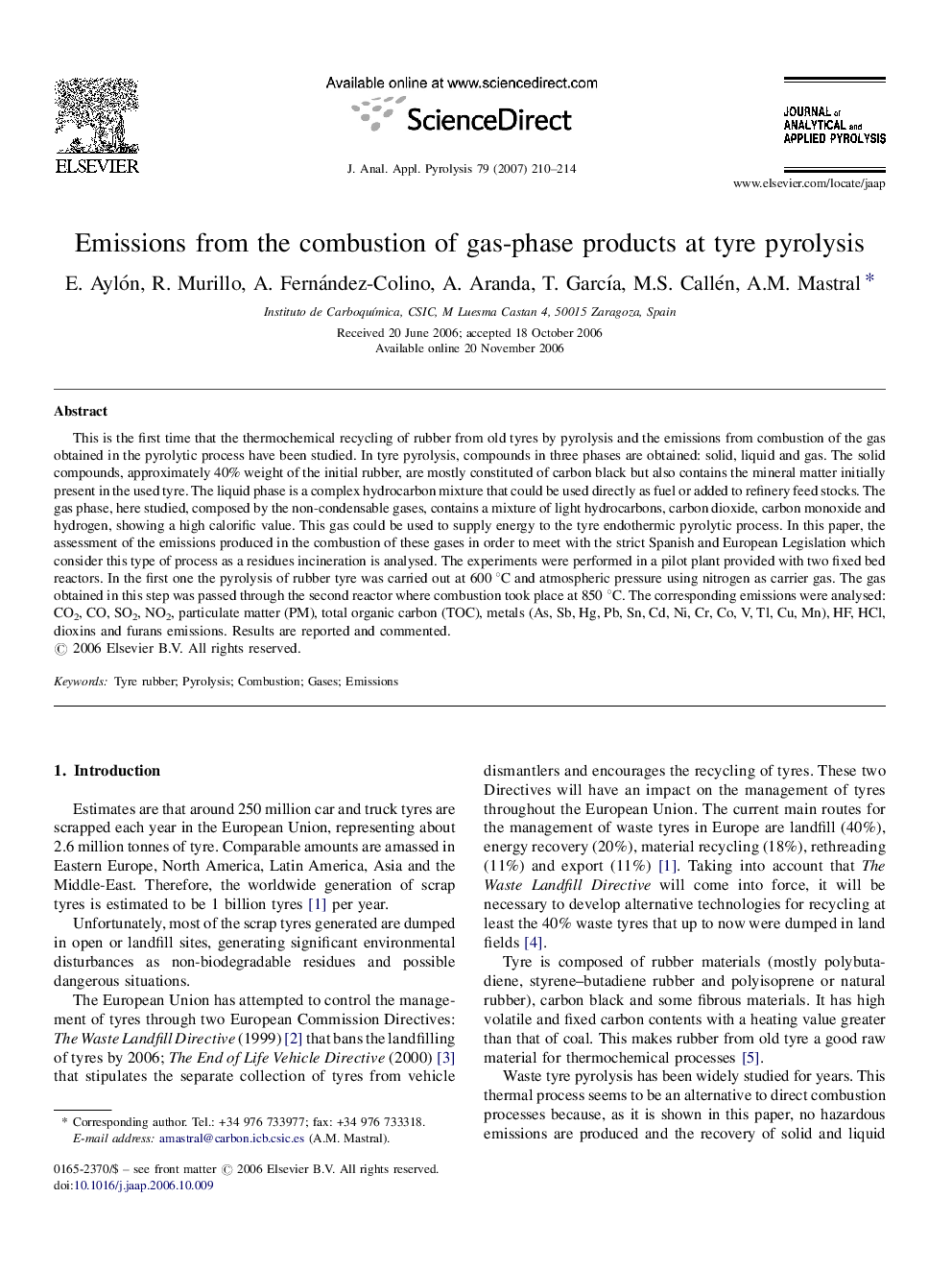| Article ID | Journal | Published Year | Pages | File Type |
|---|---|---|---|---|
| 1197951 | Journal of Analytical and Applied Pyrolysis | 2007 | 5 Pages |
This is the first time that the thermochemical recycling of rubber from old tyres by pyrolysis and the emissions from combustion of the gas obtained in the pyrolytic process have been studied. In tyre pyrolysis, compounds in three phases are obtained: solid, liquid and gas. The solid compounds, approximately 40% weight of the initial rubber, are mostly constituted of carbon black but also contains the mineral matter initially present in the used tyre. The liquid phase is a complex hydrocarbon mixture that could be used directly as fuel or added to refinery feed stocks. The gas phase, here studied, composed by the non-condensable gases, contains a mixture of light hydrocarbons, carbon dioxide, carbon monoxide and hydrogen, showing a high calorific value. This gas could be used to supply energy to the tyre endothermic pyrolytic process. In this paper, the assessment of the emissions produced in the combustion of these gases in order to meet with the strict Spanish and European Legislation which consider this type of process as a residues incineration is analysed. The experiments were performed in a pilot plant provided with two fixed bed reactors. In the first one the pyrolysis of rubber tyre was carried out at 600 °C and atmospheric pressure using nitrogen as carrier gas. The gas obtained in this step was passed through the second reactor where combustion took place at 850 °C. The corresponding emissions were analysed: CO2, CO, SO2, NO2, particulate matter (PM), total organic carbon (TOC), metals (As, Sb, Hg, Pb, Sn, Cd, Ni, Cr, Co, V, Tl, Cu, Mn), HF, HCl, dioxins and furans emissions. Results are reported and commented.
